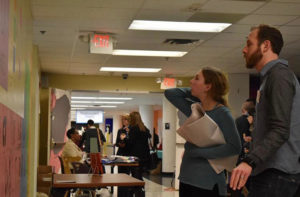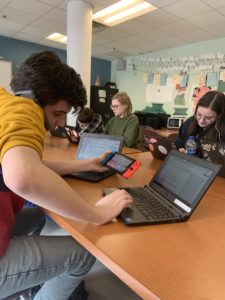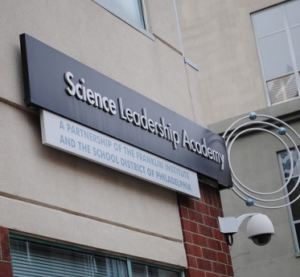Mo Kelley
Staff Writer

On Friday the 25th, SLA students were greeted to guests visiting their classrooms and asking questions. Some kids were confused; who were these people and why are they in my biochem class? But to most of the SLA students, this could only mean one thing: Educon has begun.
Educon is a conference where educators from all over the country can gather in one place and talk about the way that their teaching style. Principal Chris Lehmann describes Educon as “a progressive education conference where the pedagogy of the conference, and the way that we think the sessions should run, are similar to what we hope to see in classrooms.”
On the 27th, Educon attendees had the opportunity to tour around SLA, observing many different classes. Later that night, Junior and Educon co-chair Assirem Hosni gave a speech that introduced a panel full of educators from across the country. This marked the official start to Educon.
On Saturday and Sunday, people attended conferences with topics ranging from racial discussions in classrooms to meditation techniques for teachers. Some of SLA’s own teachers, such as Mr. Kay, Ms, Walker-Roberts, Mr. Kamal, and Mr. Lehmann, gave presentations.
Over 400 educators attended Educon that weekend. Educon Co-chair Amal Giknis was excited to see so many people in attendance this year.
“It’s really cool to see in the middle of January when it’s really cold outside and it’s the middle of the school year and everyone’s already exhausted and everyone’s coming together because they want to keep thinking about this work in meaningful ways.”
Educon has been happening at SLA for ten years, and it is the largest fundraiser for the school. This year, over 40,000 dollars was raised for the Home and School Association. But, fundraising is not the reason Educon is important for the SLA community.
Sophomore Taj Walter volunteered at Educon both last year and this year and stated, “People who teach me and people my age are there. People who will teach my kids are there. It’s fun to be around educators who actually care about what they’re teaching and how they’re teaching.”
Mr. Lehmann also says, “Twelve years into Educon, thousands of educators have come to it and it deepens their understanding and knowledge of what modern education can be and how that manifests in the ways that we teach.”
With the move to Ben Franklin so close in the future, many SLA students are wondering what will happen to Educon. Both Ms. Giknis and Mr. Lehmann assure that Educon will continue at Ben Franklin.
“The conferences are part of people’s expectations now, it’s become a tradition in the ten years that we’ve been doing. It’ll be nice to have our own space and a bigger space and an auditorium to use as a conference space next year,” Ms. Giknis states.


